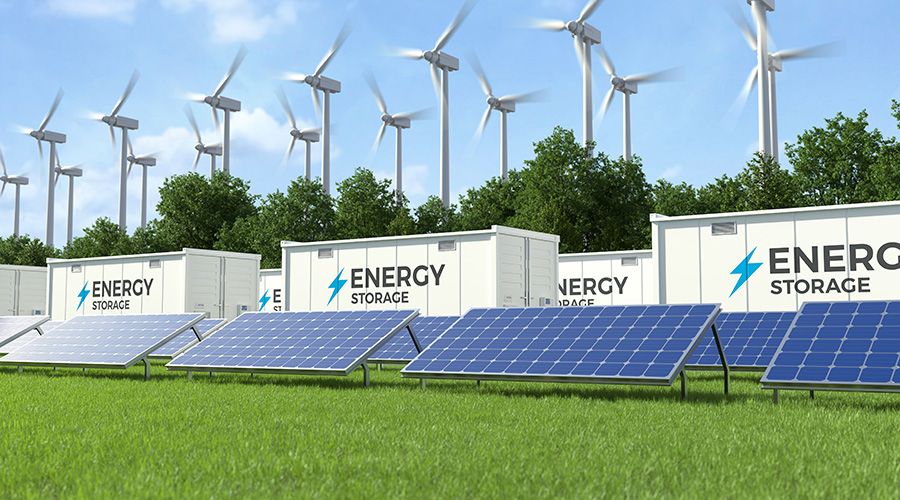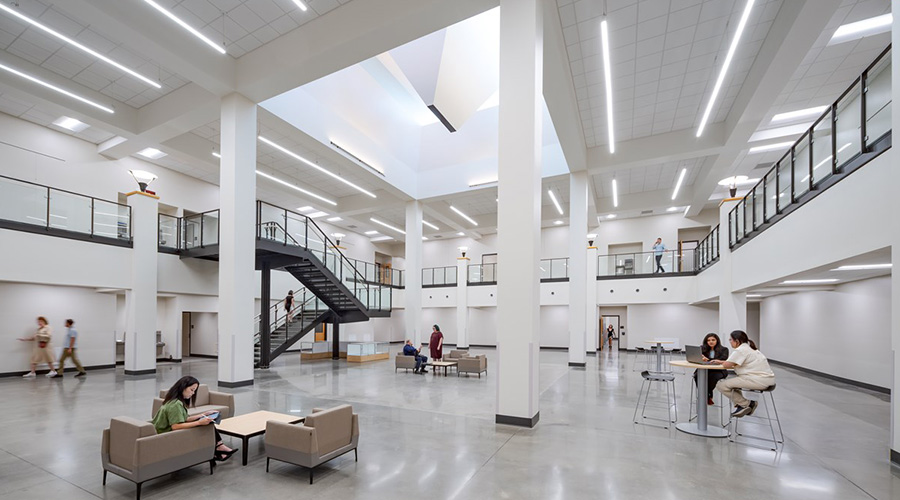The Return of Rebates
Rebates for energy efficient upgrades are on the rise. Here are some steps to find out if you qualify
Remember getting utility rebates for energy efficiency upgrades? They were big in the ‘80s and early ‘90s, but dwindled when electric deregulation became the rage. Since they bottomed out in the late ‘90s, however, funding is again on the rise. It’s time to take a fresh look.
A recent study by the American Council for an Energy-Efficient Economy (ACEEE) found that, since rebate funding bottomed out in 1998, overall funding has risen, from $900 million to $1.35 billion in 2003, an increase of 50 percent. While still far below the $1.8 billion in 1993, ACEEE says it sees this trend continuing as some states expand their support for energy efficiency as part of long-term energy resource planning.
Rebates 101
Energy rebates and incentives are based on several systemwide benefits. Energy efficiency at the end-use point helps avoid costly new generation, transmission and distribution systems. Air pollution that results from burning fossil fuels is reduced. Peak wholesale energy pricing, which may skyrocket when the margin between supply and demand is tight, may also be cut when reduced demand helps widen that margin. While the end user receives a payment, an upgrade helps both the utility and its other customers, thus justifying collection of funds from all customers to cover the costs of such programs. In recent years, the national strategic value of controlling energy use has again become an issue as competition for the world’s oil resources has raised concerns.
Where electricity prices have risen significantly, utility rebates have been concentrated on cutting power demand, but with the jump in the cost of natural gas, new programs have appeared that also aim at cutting natural gas use and demand. Rebate spending varies widely among states, with some offering nothing and others offering six times the level of spending of others, on a per capita basis. In some areas with high energy costs, such as New York City, money coming from ratepayers to cover such programs has almost doubled recently as incentive programs have broadened and rebate levels risen.
In the past, the primary form of incentive for energy upgrades was a direct payment from a utility, equipment supplier or state agency. In addition, some states — and now also the federal government — offer tax deductions or credits for attaining defined levels of efficiency, or to support specific developing technologies, such as geothermal or solar. Some states may also offer tax deductions, rebates or both for attaining LEED certification, which addresses both energy and other sustainable considerations.
Energy rebates and incentives may take the form of direct reimbursements for equipment (e.g., T8 lamps) or energy studies, payments based on performance (e.g., kw reductions), or cash that buys down the cost of new construction meeting defined standards. Some programs also allow an applicant to customize an approach that meets more general requirements, such as providing off-peak kwh savings in residences. In a few cases, lamps and motors for example, manufacturers offer additional funding, typically in the form of a cash-back discount, though such private programs are sometimes limited by time constraints.
Since deregulation started in the late ‘90s, funding methods for rebates have changed. Initially, utilities allocated a portion of their revenue to cover the cost of utility rebate programs, usually with a guaranteed return based on the success of their programs. More recently, “public benefit” charges have been added to energy bills, typically a tenth of a cent or more per kwh, to cover such programs. Even where administered by state energy offices, utilities often continue to be used as contractors to manage such programs.
Get Covered
Unless a program is limited to a specific energy source (e.g., electricity), it is likely that most standard energy-saving technologies are covered. Lighting, motors, variable speed drives, chillers, HVAC and lighting controls, insulation, window film and even process-related technologies are often involved, though the latter may involve a customized rebate.
Rebates may also cover the cost of energy-related efforts that do not directly reduce energy consumption or demand, such as feasibility studies and metering. Funding is also available in some areas for renewable power sources, such as solar, wind or biomass, and even for combined heat and power systems, also known as cogeneration. Experienced rebate aficionados suggest that an application for any energy-saving option should be pursued, unless clearly barred by a program.
Rebate levels vary widely across the country but usually cover from 15 to 35 percent of the installed cost of an energy option, with renewables sometimes as high as 50 percent. Always look at all programs that may cover a particular technology. One may offer more money than the others, though more paperwork may be involved.
While nearly all commercial, institutional and industrial utility customers are eligible for their local rebate programs, some programs are designed for specific types of customers. Government-owned institutional and educational facilities, for example, may not be eligible or may be eligible under different programs, so it’s a good idea to review the rules before assuming you can apply.
Tenants who pay for their electricity through their rent (and not to a utility) are generally not eligible because they are not actual utility customers. Working with the landlord and sharing the rebate may then be worth exploring.
If this is starting to sound like a lot of work, think about outsourcing the task. Many energy consultants and some engineering firms specialize in securing energy rebates for upgrades they are managing, or will do so as a separate task. At least one national consultancy has made securing and administering rebates its primary activity. The often changing and complex nature of the rebate process has sometimes been a challenge for those with many sites spread around the nation and outsourcing this function may make that task easier.
Avoiding Snags
Before thinking these programs are a quick ride on the gravy train, a few doses of reality are in order.
Utility rebates and state-funded rebates are not guaranteed. They depend on the availability of funding and may also be based on a competitive ranking system. Don’t build rebates into your installation budget until you have a purchase order or other documentation ensuring payment will occur.
Rebate programs appear and disappear, so it pays to move quickly. More than one state undergoing financial problems has pulled such funding to plug a budget hole, despite the negative impacts such short-term actions may have. Apply for a rebate as soon as the possibility of an upgrade appears. Rebate paperwork may take months to yield results, so starting early always pays off. If you decide not to pursue the work, there’s no cancellation fee.
Very large upgrades may yield enormous savings to both the customer and the utility, but programs often limit funding for a single project or customer, or within a defined time period (such as a year). Be sure to check program limitations before assuming the money is available. For small jobs, note the minimum rebate allowable under a program. One state, for example, will not accept applications unless the requested funding is at least $5,000.
Always consider the cost to develop and assemble an application, especially if outsourcing it. Determine the ancillary costs involved in meeting a program’s requirements, such as inspections, documentation, measurement and verification, metering, reporting and site visits. The cost of such extras could add several percent to the total cost of an installation.
Don’t confuse rebates or cash incentives with tax deductions or credits. Tax-related funding options may depend on the tax status of your firm and its profitability. Speak to your accounting staff about the dollar impact of deductions or credits to be sure they are worth pursuing from a financial standpoint. Rebates are generally not subject to federal or state income taxes, but verify that fact with your accounting department to be sure the bottom line value is fully understood.
Some types of upgrades that receive rebates may affect the level of future rebates. Renewable power sources or cogeneration will cut power use which may, in turn, reduce the incentive level under programs funded by public benefit charges built into electric bills.
Always determine the net cost of an installation, not how much money you get back in rebates. Where high rebates are available for renewables like photovoltaics, for example, some have been dazzled by incentives of $3,000 (or more) per installed kw. The proper approach is to look at how much you must still spend to secure that $3,000. If the end result still has a very long payback, the rebate level is irrelevant.
Delaying an installation job to secure a rebate could end up costing more than the rebate is worth. Don’t let such funding dictate the schedule unless it is essential to make the project budget work.
When using a contractor on an energy job, consider the specifications the firm will follow with regard to securing rebates or incentives and whatever extra work, like documentation, is involved to get them. If the contractor is charged with securing the rebates, include a provision regarding what happens if the firm fails to do so, resulting in a cost overrun.
RESOURCES
Money Trail Starts Online
To find energy rebates that apply to your area, start by checking your utility’s Web site and chatting with your utility account rep. Even if rebate programs are run by a state energy agency, your utility will likely know about them and can offer guidance. Public utility commissions often have useful links at their Web sites. Links may be found to all utilities at The Utility Connection. Links to public utility commissions may also be found on-line.
While focused on energy use in public buildings, the National Association of Energy Officials “Public Buildings Manual” contains a brief state-by-state review of available energy incentives.
The Database of State Incentives for Renewable Energy is an excellent information resource on state, local, utility and selected federal incentives that promote renewable energy and energy efficiency. This ongoing project of the Interstate Renewable Energy Council is funded by the U.S. Department of Energy and managed by the North Carolina Solar Center. Through text-based summaries, it shows the types of programs that are available, the technologies they support, and where to get more information about them.
— Lindsay Audin
|
Lindsay Audin is president of EnergyWiz, an energy consulting firm based in Croton, NY. He is a contributing editor for Building Operating Management.
Related Topics:













